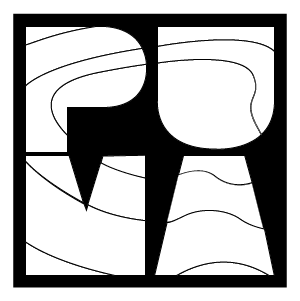Prospecting the Urban Mines of Amsterdam (PUMA)
The buildings of Amsterdam contain tons of steel, copper, aluminum and lead. Amsterdam can be seen as an urban mine. In a circular economy, under certain conditions, Amsterdam's buildings could be mined for their metals. This visualisation is a rough draft of a geological prospecting map in such a scenario.
Obviously, the metals are still in use, so they're not free to process just yet. It will take time before they can be extracted. But, in the mining industry, this is business as usual – getting any mine running takes decades. Traditionally, mines are underground. The earth contains iron, copper and aluminum. But ore concentrations are going down, and it takes more and more energy to get the metals out. Worldwide, 7- 8% of all energy consumption is used to produce metals. It takes far less energy to take the metals from urban mines. Still, we have to ask: can it be done? And is it worthwhile?
The first step in any mining process is prospecting, that is, physically searching for minerals and precious metals. To start, we need to make a geological map of the urban environment. Where are the metals? How much is there? What is the quality? When will these metals become available?
Sustainable Amsterdam
“Effective use of raw materials is one of the focal points in the first sustainability programme in the city of Amsterdam”, is a quote from “Amsterdam Definitely Sustainable” (Amsterdam Beslist Duurzaam, 2011-2014). According to this plan, the effective use of raw materials involves thinking in cycles. In the document, “De Circulaire Metropool Amsterdam” (2014), the intention is to convert Amsterdam to a circular economy for materials. “Amsterdam Circulair” (2015) lays out a first roadmap specifically for the urban environment and biomass.
PUMA project
The PUMA project attempted to estimate of the rough amount of copper and iron contained in the residential buildings of Amsterdam (based on proxies like height of the building).
Data, concentration estimates and testing assumptions
The map and calculations are based on open data and a calculation based on a method by Koutamanis et al. Their steps can be found in the article "PUMA – from building to urban mine" (PDF, draft 2016).
Used data sets are BAG and AHN
Metabolic has tested the PUMA framework’s assumptions through site-visits and physical inspection of buildings. Based on their findings Metabolic provides recommendations for refining the current framework and proposed methods of estimating metal concentration. The report is available here: " Prospecting the Urban Mines of Amsterdam. Refining the PUMA method based on findings from practice" (PDF).
Further reading and information
www.ams-institute.org/solution/puma/
Credits
Funded by AMS Institute the PUMA project is a joint research effort of TU Delft, Waag Society, CML Leiden University and Metabolic.
Source code and TileMill project can be found on GitHub More info via code@waag.org.
License
(c) 2016 This work is licensed under a Creative Commons Attribution-NonCommercial-ShareAlike 4.0 International License.
